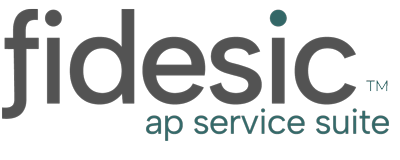Days Payable Outstanding: How to Calculate Accounts Payable Days
In this post we start by defining days payable outstanding, then we explain why accounts payable days is an important metric to track. We will also explain the accounts payable days calculation and how to use the account payable days formula to track and report on your AP performance.
What is Days Payable Outstanding (DPO) in Accounts Payable Days?
Days Payable Outstanding (DPO) is simply the average number of days your business takes to pay its bills. Think of it like this: when suppliers send you products or services, they don't always demand immediate payment—they typically give you a grace period. DPO measures how many days, on average, you wait before paying these bills.
A higher number means you're holding onto your cash longer before paying suppliers, which can help your short-term cash flow. A lower number means you're paying bills quickly, which might make suppliers happy but gives you less time to use that money for other purposes.
This metric helps businesses understand how efficiently they're managing their money and supplier relationships. It's essentially a financial "breathing room" indicator that shows how long you can use borrowed money before having to pay it back.
This key metric also provides insight into accounts payable efficiency and overall cash flow. Understanding DPO and how to calculate accounts payable days is important for businesses as it reflects a company's ability to efficiently manage its accounts payable without jeopardizing supplier relationships.
Why DPO Matters for Your Business
Tracking accounts payable days or DPO offers numerous benefits for businesses:
-
Cash Flow Management: DPO has significant implications for cash flow, operational efficiency, and supplier management. A higher DPO indicates that the company is taking longer to pay its suppliers, which may improve short-term cash flow.
-
Operational Efficiency: An optimal DPO suggests that the company is efficiently managing its payables. It indicates a well-structured accounts payable process where the company takes advantage of credit terms without compromising its relationships with suppliers.
-
Benchmarking: Comparing DPO against industry standards and competitors helps assess whether a company's payable practices are in line with or better than the market average. Significant deviations might warrant a review of the company's payment strategies and practices.
-
Risk Management: Monitoring DPO helps in identifying potential risks related to cash flow management and supplier dependency. Companies can take proactive measures to mitigate these risks, ensuring sustainable operations and financial stability.
DPO Calculation

To calculate the accounts payable days or DPO for a period, we divide the average accounts payable by the cost of goods sold (COGS) and multiply by the number of days in the period. Here's the formula:
Days Payable Outstanding (DPO) =
(Accounts Payable / Cost of Goods Sold) × Number of Days in the period
Let's break down each component of the DPO calculation:
-
Accounts Payable: The amount a company owes to its suppliers for purchases made on credit. This figure is found on the company's balance sheet.
-
Cost of Goods Sold (COGS): The direct cost of production of the goods sold by the company. COGS is found on the company's income statement and includes all direct costs related to the production of goods sold, such as raw materials and labor.
-
Number of Days: Typically, this is taken as 365 days for a year. For quarterly calculations, 90 is considered.
Step-by-Step DPO Calculation Process
Let's break down the accounts payable days calculation process step by step:
-
Determine the Accounts Payable: Retrieve the accounts payable value from your balance sheet. For more accurate results, you can use the average accounts payable for the period.
-
Calculate the Average Accounts Payable: To calculate the average accounts payable balance, add the beginning and ending accounts payable balances for the period and divide the sum by two.
Average Accounts Payable = (Beginning AP + Ending AP) / 2 -
Determine the COGS: To calculate the cost of goods sold, add the beginning inventory and purchases in the period, and subtract the ending inventory.
COGS = Beginning Inventory + Purchases - Ending Inventory -
Determine the Number of Days: Use 365 for annual calculations, 90 for quarterly, or the appropriate number for your analysis period.
-
Apply the DPO Formula: Plug the values into the formula to calculate your DPO.
DPO = (Average Accounts Payable / COGS) × Number of Days
Example DPO Calculation
Let's look at a practical example of an accounts payable days calculation:
Consider a company with $800,000 in accounts payable and $8,500,000 in COGS for the year.
DPO = ($800,000 / $8,500,000) × 365 = 34.35
Therefore, this company takes an average of 34 days to pay back its accounts payable.
Interpreting DPO Calculation
The average number of accounts payable days outstanding (DPO) typically ranges from 30 to 90 days, depending on the industry. For example, a retail company might have a DPO of 45 days, meaning it takes 45 days on average to pay its suppliers.
According to a statistic from Investopedia, the DPO of Amazon for 2023 was approximately 110 days, illustrating how large companies can leverage their size to secure extended payment terms.
How should you interpret your DPO value?
-
High DPO: A higher DPO implies greater negotiating power with suppliers and operating efficiency, which improves the company's free cash flow (FCF) and near-term liquidity. However, taking too long to pay creditors may result in unhappy creditors and their refusal to extend further credit or offer favorable credit terms.
-
Low DPO: A low DPO may indicate that the company is not fully utilizing its cash position and may indicate an inefficiently operating company.
-
Balanced DPO: There is no good or bad DPO, but generally, a high DPO suggests effective cash use, while a low DPO may signal issues with vendors. The key is finding the balance that works for your company and industry.
📈DPO and Other Financial Metrics
Accounts payable days is often analyzed alongside other financial metrics:
-
Days Sales Outstanding (DSO): DSO measures the average length of time for sales to be paid back to a business. A high DSO combined with a high DPO could be a sign the business is short on cash and having trouble meeting its obligations. A low DSO combined with a high DPO could indicate the business is cash-rich, but is being more strategic by paying its vendors later and reinvesting the extra funds.
-
Cash Conversion Cycle (CCC): DPO value forms an integral part of the formula used for calculating the cash conversion cycle (CCC), another key metric that expresses the length of time that a company takes to convert the resource inputs into realized cash flows from sales.
⚡Strategies to Optimize DPO
Here are some strategies to optimize your DPO:
-
Negotiate Better Payment Terms: Companies can negotiate with suppliers to extend payment terms.
-
Implement Payment Timing Strategies: If a company really prioritizes maximizing its DPO, it can decline to take advantage of early payment discounts. However, always weigh the benefits against the potential savings from discounts.
-
Automate Accounts Payable Processes: Utilizing technology to streamline invoice processing and payment scheduling can reduce errors and enhance efficiency. Automation can also help track payment deadlines, ensuring that bills are paid on time without incurring late fees.
-
Regular Supplier Relationship Management: By fostering open communication and negotiating mutually beneficial terms, businesses can enhance their DPO while maintaining strong supplier partnerships.
-
Electronic Payment Systems: By using electronic payment systems, a company can streamline its payment processes and make payments more quickly and efficiently.
Conclusion
Cash flow continues to be a persistent problem for SMBs, according to a recent survey by QuickBooks. Research shows that 74% of small business owners report their cash flow challenges have stayed the same or worsened over the last 12 months, with only 26% saying their cash flow problems have improved
Tracking DPO helps your business identify bottlenecks in your accounts payable processes and understand payment trends. Armed with this information, you can improve AP workflows and make more informed cash management decisions to pay vendors on time and maintain healthy cash flow.
Understanding and managing Days Payable Outstanding is crucial for any business aiming to optimize cash flow and maintain healthy supplier relationships. By calculating and monitoring this key metric, businesses can make more informed decisions about their accounts payable management, ultimately contributing to improved financial health and operational efficiency.
Remember that while a higher DPO may benefit your cash flow in the short term, maintaining good relationships with your suppliers is essential for long-term business success. Strike the right balance for your specific business needs and industry standards.





